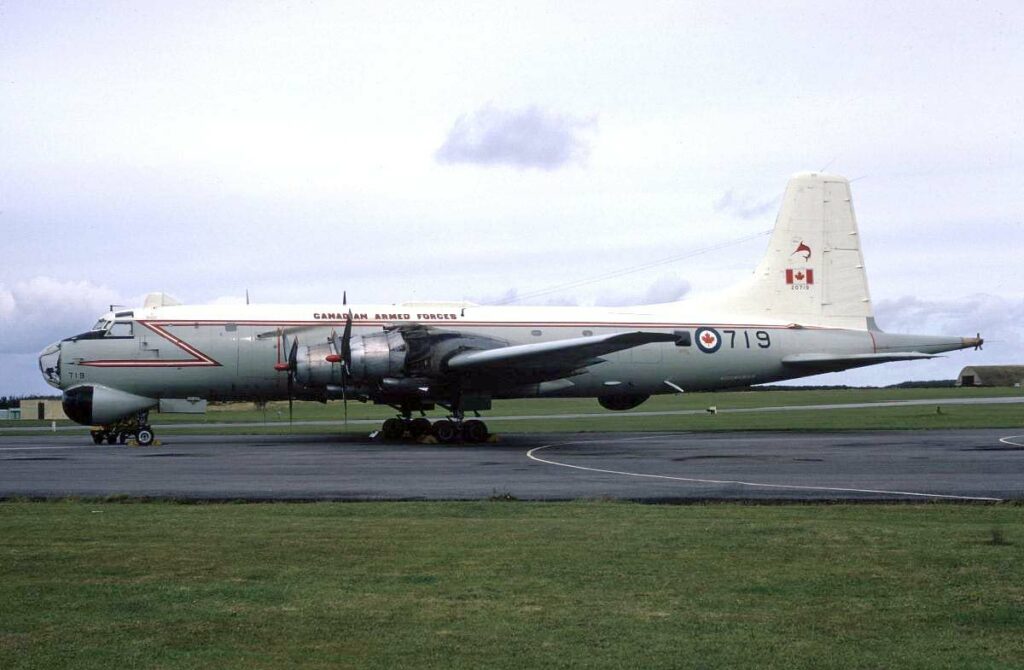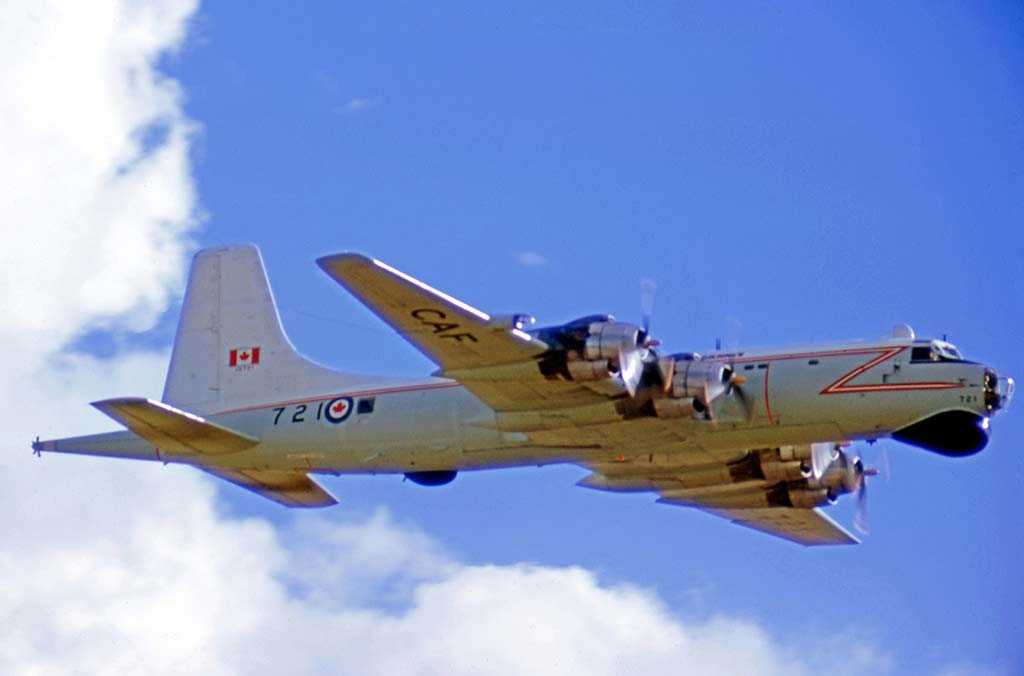The Canadair CP-107 Argus was a m Canadian maritime patrol aircraft, piston-engine, long-endurance, anti-submarine warfare specialist, 1950s-era.
Technical Summary
The Canadair CP-107 Argus, developed in the 1950s, represents a pivotal advancement in maritime patrol and anti-submarine warfare (ASW) capabilities. Based on the design of the Bristol Britannia airliner, the Argus was reconfigured for military service, featuring extensive modifications to fulfill its specialized role. It was equipped with four powerful piston engines, providing the long endurance necessary for extended maritime patrol missions. The aircraft boasted sophisticated electronic surveillance and acoustic systems for detecting and tracking submarines, making it a formidable asset during the Cold War. With a maximum takeoff weight of around 104,000 pounds and a wingspan of 142 feet, the Argus combined impressive range and on-station time, setting it apart from contemporaries in its class.
The Canadair CP-107 Argus stands as a monument to Cold War era military aviation, particularly in the domain of anti-submarine warfare. Designed and built by Canadair Limited in Canada, the Argus was a response to the escalating submarine threat of the time, serving as a cornerstone of Canada’s maritime defense strategy.

History of the Development of the Canadair CP-107 Argus
In the post-World War II era, the advent of nuclear-powered submarines significantly altered the strategic balance of naval power, necessitating advancements in anti-submarine warfare capabilities. The Royal Canadian Air Force (RCAF), recognizing the need for a dedicated long-range maritime patrol aircraft to protect North America and NATO allies, initiated the development of what would become the CP-107 Argus.
The program was launched in the early 1950s, with Canadair selected to design and manufacture the aircraft based on the civilian Bristol Britannia. The aim was to create an aircraft capable of long-endurance missions over the vast expanses of the Atlantic, equipped with the latest in radar, sonar, and magnetic anomaly detection (MAD) technology to locate and track enemy submarines.
The first flight of the Canadair CP-107 Argus occurred on March 28, 1957, marking a significant achievement in Canadian aerospace engineering. Unlike many of its contemporaries, the Argus was not assigned a NATO nickname, reflecting its unique position as a predominantly Canadian operation.
Design of the Canadair CP-107 Argus
The design of the Argus was heavily influenced by its intended role as a maritime patrol and anti-submarine warfare platform. It featured a high-wing monoplane layout for stability and visibility, with a length of 128 feet (39 meters) and a wingspan of 142 feet (43.4 meters). The aircraft was powered by four Wright R-3350 Duplex-Cyclone radial piston engines, a choice that, while considered outdated by the advent of turbojets, offered unmatched endurance and reliability for long-duration patrols.
The Argus could carry a comprehensive array of detection equipment, including radar, sonar buoys, and a magnetic anomaly detector, housed in a distinctive “stinger” tail. The aircraft’s internal configuration allowed for extensive mission equipment and crew accommodations, ensuring operators could maintain peak efficiency during missions lasting up to 24 hours.
Despite its strengths, the Argus faced challenges related to its piston-engine design, including maintenance complexity and limited speed compared to newer turbojet aircraft. However, its unparalleled endurance and loiter capability made it an invaluable asset for maritime surveillance and ASW operations.
Performance of the Canadair CP-107 Argus
The CP-107 Argus was renowned for its exceptional performance in the realm of maritime patrol. With a maximum range of over 5,000 nautical miles (9,260 kilometers) and an endurance exceeding 24 hours, the Argus could cover vast areas of the ocean, a critical advantage in detecting and tracking submarines. Its cruising speed of approximately 200 mph (322 km/h) and service ceiling of 25,000 feet (7,620 meters) facilitated effective surveillance operations over both open water and coastal regions.
Compared to contemporaries such as the American Lockheed P-3 Orion, the Argus offered comparable endurance but at the cost of lower speed and altitude capabilities. Nevertheless, its mission effectiveness in ASW operations remained highly regarded.
Variants of the Canadair CP-107 Argus
The Argus underwent several modifications throughout its service life, resulting in two primary variants: the CP-107 Argus Mk.1 and the CP-107 Argus Mk.2. The Mk.2 variant featured updated navigation and mission equipment, enhancing its operational capabilities. Despite these improvements, the fundamental design and role of the aircraft remained unchanged, focusing on long-endurance maritime patrol and anti-submarine warfare.

Military Use and Combat of the Canadair CP-107 Argus
Throughout its service with the Canadian Armed Forces, the Argus played a pivotal role in NATO’s maritime defense strategy during the Cold War. Its primary mission involved long-range patrols across the North Atlantic, monitoring Soviet submarine activity and contributing to the deterrence of nuclear conflict. The aircraft participated in numerous NATO exercises, demonstrating its capabilities in ASW and maritime surveillance.
Although the Argus did not engage in traditional combat operations, its strategic importance in maintaining awareness of submarine movements cannot be overstated. Its contributions to collective security during a tense period of global history underscore the critical role of maritime patrol aircraft in modern warfare.
By the late 20th century, advancements in technology and changing defense priorities led to the Argus being replaced by the Lockheed CP-140 Aurora, which offered improved speed, range, and avionics. Despite its retirement, the legacy of the Canadair CP-107 Argus as a cornerstone of Canadian and NATO maritime defense remains significant.
The Canadair CP-107 Argus exemplifies the evolution of maritime patrol and anti-submarine warfare capabilities during the Cold War. With its remarkable endurance, sophisticated surveillance equipment, and strategic operational role, the Argus represented a critical component of Western naval defense. Its development, deployment, and enduring legacy underscore the importance of innovation and adaptability in addressing the challenges of modern military operations.
Back to the Special Aircraft section